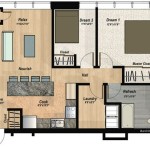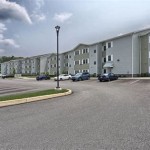Smoke Alarm Placement in Bedrooms: Ensuring Safety and Protection
Smoke alarms play a crucial role in fire safety, providing early warning of a potential fire and giving occupants precious time to escape safely. In residential settings, placing smoke alarms strategically within bedrooms is paramount to maximizing their effectiveness and guaranteeing the safety of all occupants, particularly those vulnerable to smoke inhalation, such as children and elderly individuals. This article delves into the optimal placement of smoke alarms in bedrooms, highlighting key considerations for homeowners to ensure their family's well-being.
Proper Placement for Maximum Effectiveness
The National Fire Protection Association (NFPA) recommends installing at least one smoke alarm on each level of a home, including the basement and attic. However, specific recommendations for bedroom placement emphasize their critical role in ensuring timely detection and evacuation. Smoke alarms installed in bedrooms should ideally be placed on the ceiling, at least 10 inches away from any wall, and as close to the center of the room as possible.
This placement maximizes the alarm's reach, allowing it to detect smoke from different areas within the bedroom. Furthermore, positioning the smoke alarm on the ceiling ensures that smoke, which typically rises, is detected quickly and efficiently. It's important to note that smoke alarms should not be placed near windows or doors, where drafts might impede their performance. Additionally, avoid placing them in areas with high heat, such as near a fireplace or furnace, as this could trigger false alarms.
Types of Smoke Alarms to Consider
There are two primary types of smoke alarms: ionization and photoelectric. Ionization smoke alarms are sensitive to small, fast-burning fires, while photoelectric smoke alarms are more responsive to smoldering fires that produce larger particles. The choice of smoke alarm type depends on individual preferences and fire hazards within the home.
For bedrooms, photoelectric smoke alarms are generally recommended due to their ability to detect smoldering fires, which are often associated with materials like mattresses, curtains, and carpets. While ionization alarms may detect faster-burning fires more readily, photoelectric alarms provide a higher degree of safety for those who sleep soundly or have difficulty waking up to audible alarms. It's important to consult with local fire departments or qualified electricians to determine the best type of smoke alarm for a particular home.
Interconnected Smoke Alarms: Creating a Unified System
Interconnected smoke alarms are a crucial safety feature that ensures simultaneous activation of all alarms within the home. This system is particularly effective in multi-level homes, as it allows occupants on upper levels to be alerted to a fire in the basement or another lower level. Interconnected smoke alarms are typically wired together, but wireless options are also available, offering flexibility for homeowners.
Installing interconnected smoke alarms ensures that even if a fire starts in one area of the home, all occupants will be alerted simultaneously, increasing their chances of escape. When choosing an interconnected smoke alarm system, ensure compatibility with existing wiring and consider the availability of backup power sources, such as batteries, in case of power outages.
Maintenance and Testing: Ensuring Optimal Performance
Smoke alarms, regardless of their type, require regular maintenance and testing to ensure optimal performance. The NFPA recommends testing smoke alarms monthly, using the test button provided. This ensures that the alarm is functioning properly and that batteries are not depleted. Additionally, smoke alarms should be cleaned regularly to remove dust and debris that may interfere with their sensitivity.
Battery-powered smoke alarms require periodic battery replacements, typically every six months. The "chirping" sound from a smoke alarm usually indicates a low battery and needs attention. For hardwired smoke alarms, a backup battery is usually included for protection during power outages. These backup batteries should be checked and replaced as needed, following manufacturers' recommendations. Regular maintenance and testing are essential to guarantee the effectiveness and longevity of smoke alarms, ensuring their ability to provide early warnings in case of a fire.

Smoke Detector Locations Arkansas Department Of Public Safety

Where To Install Smoke Alarms And Heat Labc

Installation And Maintenance Cfa Country Fire Authority

Where To Place Smoke Detectors In Your Home Praos Smart Security

Where To Install Smoke Detector In Bedroom With Ceiling Fan

All About Smoke Detector Code

Recommended Locations For Smoke Alarm Installation

Placing Smoke Alarms Correctly Placemakers
Smoke Detectors Wilmer Tx

Where To Put A Smoke Alarm Or Detector In Bedroom








